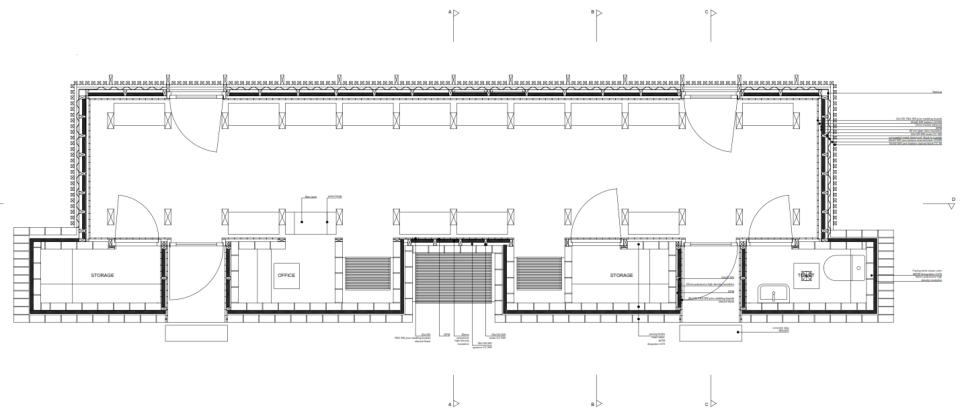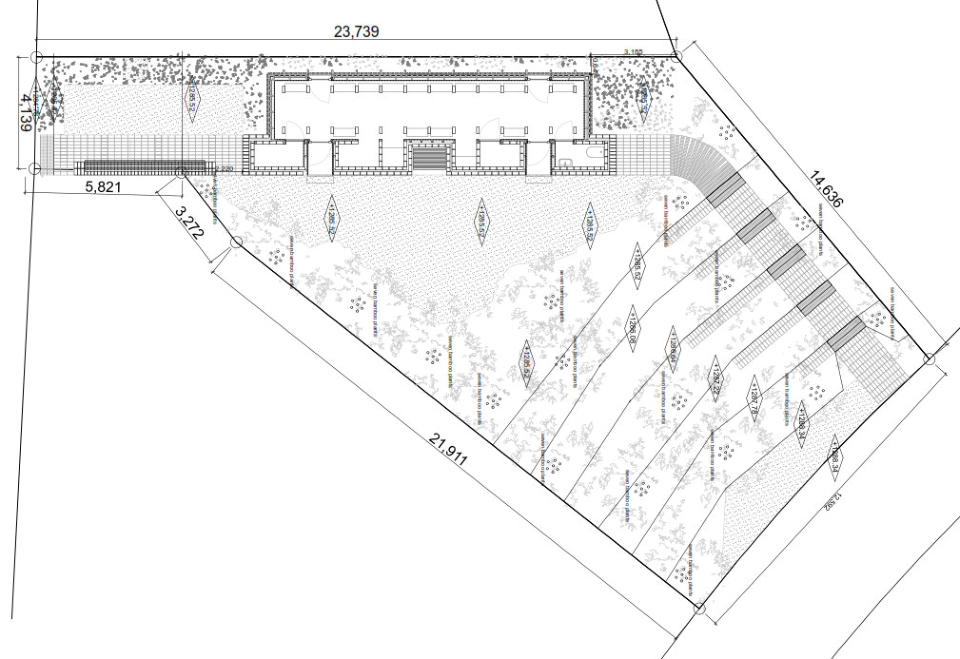
Spring semester 2018




The SCS Team:
Students: Elvira Fernandez Mateos, Mengxue Gu, Kristine Heimdal,
Ane Marie Jakobsen, Karoliina Mäenpää, Kim Alena Neubüser,
Anne Ringstad, Tarjei Svalastog, Nuria Tarres Rosello, Martin Tosterud,
Sigrid Thunberg, Johanne Hoffmann.
Staff: Christian Hermansen Cordua, Solveig Sandness, & Jan Kazimierz Godzimirski
We are extremely greatful to our sponsors, withough whose help these projects would not be possible:






The Louna Architects’ Bookshop for Louna International Architect’s Village
After
decades
of
concentrating
resources
on
urban
industrial
development,
China
has
turned
its
attention
to
its
rural
areas
where
it
is
sponsoring
a
variety
of
development
initiatives.
One
of
these
is
the
Louna
International
Architects’
Village
initiated
by
Urban
Environment
Design
(UED)
Magazine
and
CBC
(China
Building
Centre),
which
occupies
a
small,
beautiful
valley
called
Louna,
in
Yilong
District,
Qianxinan
Buyei
and
Miao
Autonomous
Prefecture,
Guizhou
Province.Louna
International
Architects’
Village
is
viewed
as
a
“Peach
Colony”,
a
Chinese
reference
to
an
idyllic
dream.
In
pursuance
of
the
policy
of
“rural
revival”
“and
“beautiful
countryside”,
this
Village
gathers
renowned
architects,
artists,
scholars
and
cultural
workers
from
home
and
abroad,
such
as
Ryue
Nishizawa,
Seung,H-sang,
and
Xinggang
Li.
UED
and
CBC
invited
The
Scarcity
and
Creativity
Studio,
AHO,
to
design
the
village’s
bookshop.
Architectural
education
is
a
significant
component
of
rural
revitalization
and
Louna
International
Architects’
Village
is
committed to become a research and education center focused on future rural revival.
The Louna Architects’ Bookshop
Since
the
advent
of
digitisation,
printed
books
are
going
through
difficult
times.
The
consolidation
of
publishers
and
the
demise
of
long
established
booksellers
are
the
most
visible
signs
of
the
challenges
that
the
book
industry
faces.Spurred
by
these
challenges,
enterprises
that
deal
with
printed
matter
are
trying
to
respond.
Web-based
book
purchases
have
now
taken
a
sizeable
percentage
of
the
market,
while
traditional
bookshops
try
to
re-think
the
spaces
in
which
clients
purchase
books.
One
direction
taken,
akin
to
the
transformation
of
airports
into
shopping
malls,
is
converting
bookshops
into
cafe/restaurants
with
access
to
books.When
SCS
discussed
these
trends,
it
decided
not
to
dilute
the
relation
of
people
and
books
by
introducing
other
activities.
To
highlight
this
decision
the
Louna
Architects’
Bookshop
is
conceived
as
a
small
part
of
a
large
National
or
University
library,
where
you
walk
through
endless
narrow
aisles
bounded
on
two
sides
by
floor
to
ceiling
bookshelves.
The
natural
light
of
this
long
and
narrow
space
comes
from
a
very
high
east-facing
window,
which
does
not
permit
exterior
views.
The
only
concession
to
comfort
is
the
provision
of
two
niches
where
customers
can
sit
to
peruse
books
for
longer
times.
Blessed
with
a
stable
and
temperate
semi-tropical
climate,
the
landscape
around
the
bookshop
was
conceived
as
a
place
where
you
could
read
books
and
magazines
outdoors.The
building
is
composed
of
two
parts;
the
main
tall
space
containing
the
books
is
the
space
that
clients
will
experience.
The
lower
concrete
block
part
contains
the
servicing
spaces,
an
office,
sales
counter,
storages,
and
a
toilet.
To
highlight
the
difference
between
these
two
parts,
we
chose
to
build
each
in
different
materials.
The
book-
space
is
timber;
black,
treated
softwood
on
the
outside,
and
light
coloured
maple
cladding
on
the
inside.
In
recent
times
in
China,
rapid
urbanisation,
increases
in
population,
and
decreases
in
available
forests
has
resulted
in
the
reduction
of
the
use
of
timber
as
a
building
material.
In
contrast,
timber
remains
the
main
building
material
of
suburban
and
rural
Norway;
a
material
that
SCS
is
familiar
with.
To
distinguish
the
book
space
from
the
servicing
volume,
we
decided
to
use
concrete
blocks
for
the
latter.
As
China
is
the
largest
producer
of
cement
in
the
world,
concrete
blocks are the ubiquitous building material, both in cities and rural areas








